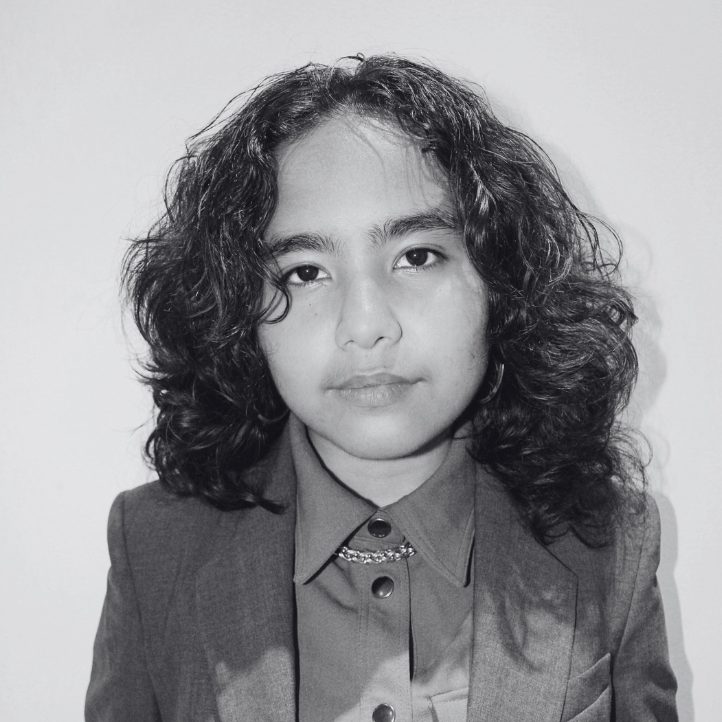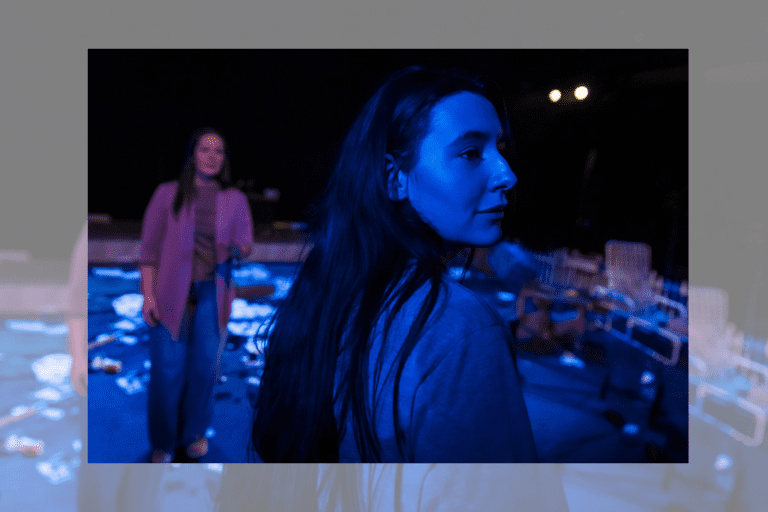REVIEW: The Waltz at Factory Theatre is the Swagapino representation we need
I feel the need to explain what “Swagapino” is — for the culture.
“Swagapino” is a portmanteau of the words “swag” and “Filipino.” It’s a hybrid of Filipino and North American heritage, with a signature style that typically involves a backwards baseball cap, fresh sneakers, and the drippiest chain you can find.
But it’s not just a fashion statement — it’s a lifestyle, one Anthony Perpuse flawlessly embodies in his portrayal of RJ in Marie Beath Badian’s play The Waltz, returning to Factory Theatre after its acclaimed premiere last fall. From the very moment Perpuse steps into the spotlight, wielding his colossal boom box, he exudes genuine swagger and an understated charm. On the night I attended, there was an unexpected yet charming moment when RJ’s chain slipped from his neck while he tried to impress bold and adventurous Bea, the other character in the play. The theatre erupted in laughter as Perpuse maintained his composure, and it was one of those delightful unplanned moments that worked out perfectly within the context of the story.
I want to acknowledge Jackie Chau’s costume and set design as she does a wonderful job illuminating RJ’s character. Every little detail feels like a perfect homage — nay, a love letter — to Philippine-Canadian culture. From his ’90s-inspired wardrobe to the middle part in his hair, the backwards Blue Jays cap, and even him being named “RJ,” short for Romeo Junior (as he’s named after his father), it all exudes an unmistakable Swagapino flair. But beyond these nuances, RJ’s character feels so genuine that he could easily have been one of my own friends.
Marie Beath Badian’s script skillfully weaves in culturally recognizable traits of a Filipino-Canadian, offering subtle yet powerful nods to both characters’ identities. I can attest to just how Filipino the script is as a self-proclaimed Swagapino from Scarborough. For instance, Romeo’s remarkable achievements, such as becoming the valedictorian of his high school while juggling a demanding double part-time job at the Eddie Bauer stockroom in Scarborough Town Centre and even finding time for a side hustle in dance instruction at a ballroom, are emblematic of the super-achiever spirit often found within immigrant, but especially Filipino communities.
Ericka Leobrera does a beautiful job playing Bea Klassen, a gutsy, self-conscious, small town loner “cool” girl living in an obscure Saskatchewan town with a knack for shotgunning beers — and she does so with whimsy, ease, and (you guessed it) swag.
RJ and Bea are polar opposites in many ways; he’s popular and fits within Scarborough’s multicultural landscape, while she’s a loner who sticks out in rural Saskatchewan and feels like she doesn’t belong anywhere. It all seems stereotypical at first glance, but upon further reflection it becomes evident that Badian defies this cliché and transforms the material into something truly enchanting. This is only further amplified by Nina Lee Aquino’s tasteful directorial choices. Intermission outlined these nuances in its review of the show last year, so I won’t go too in-depth about it here.
Despite their differences, RJ immediately senses a kindred spirit in Bea. There’s an unspoken recognition between them, a silent acknowledgement of shared ancestry… and yet, she is defensive about her identity upon first meeting him. I empathize with her for feeling somewhat estranged from her Filipino-Canadian heritage, given her experiences being “othered” in a small, predominantly white town. Discovering pride in an aspect of your identity that conspicuously sets you apart from your peers can indeed be a formidable challenge.
RJ and Bea’s connection deepens as they share stories of their complicated family relationships. RJ opens up about his challenging relationship with his chauvinist father; he personifies the echoes of machismo culture and is ultimately a reflection of the colonial history that has deeply influenced traditional gender roles within Philippine culture.
Meanwhile, Bea reflects on her recent trip back to the Philippines; how she yearns to bridge the gap between her Canadian upbringing and her Filipino heritage; how echoes of past bullying continue to haunt her, and how she finds herself struggling to embrace the push and pull of her identity. She expresses heartfelt gratitude to her mother, a nurse, for both her tireless work in affording this opportunity, and her unwavering support for their family. She also expresses how it feels like to live in the shadow of her popular, valedictorian, fairer-skinned younger sister.
I must admit I got wildly emotional watching RJ and Bea interact and share their stories — as did my mom, my date to the play. Filipinos have consistently been among the largest growing community of migrants in Canada, yet remain underrepresented in the media. Bearing witness to this candid portrayal felt incredibly validating.
All people, but especially those from marginalized communities feel the need to prove ourselves. Striving for excellence becomes a means to be recognized, to “work hard” and “achieve the American dream” — a universal facet of the immigrant working class experience. We are driven by the fear of perpetuating the generational cycle that constrains our forebears.
In a poignant exchange, RJ questions Bea about her family’s decision to leave the Philippines. She confides to him that her family is still grappling with the financial aftermath of the trip. Additionally, she tells him that her relatives are scattered all over the globe and share a common goal — to make a better life for their families.
What’s truly remarkable is that the Philippines is comprised of over 7,000 different islands. It boasts over 120 different dialects of language, and is a mosaic of some of the most diverse groups of people in the world. Filipinos come in all varieties all across the globe, and our unique narratives warrant more recognition and appreciation.
I only wish to bear witness to more of our stories, because it was truly a joy to see myself represented so beautifully onstage.
The Waltz runs at Factory Theatre until September 17. Tickets are available here.
Intermission reviews are independent and unrelated to Intermission’s partnered content. Learn more about Intermission’s partnership model here.













Comments